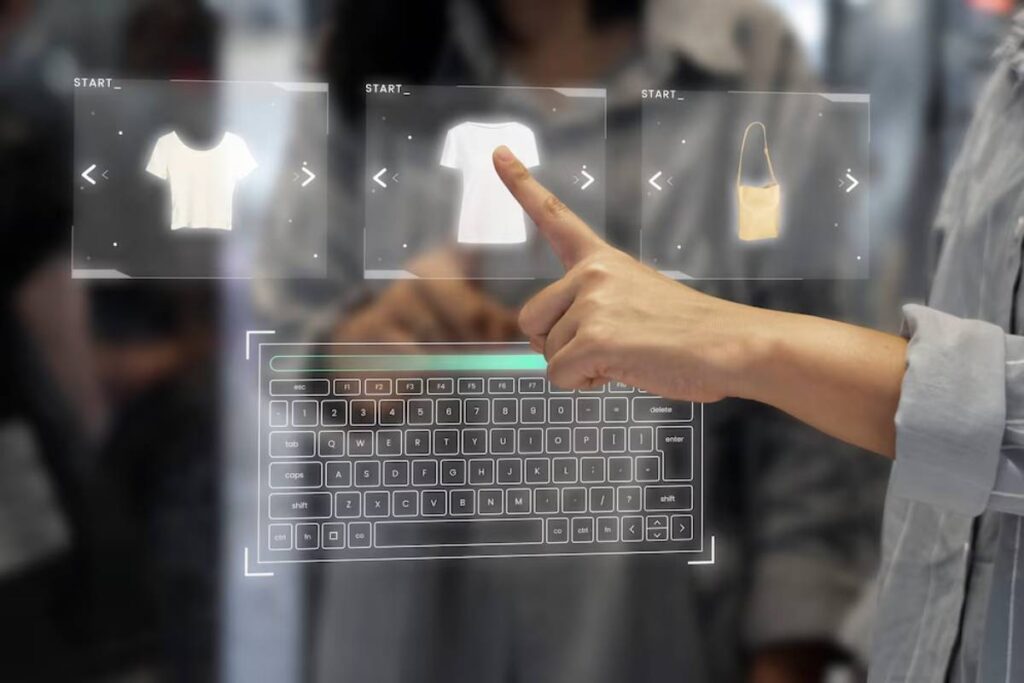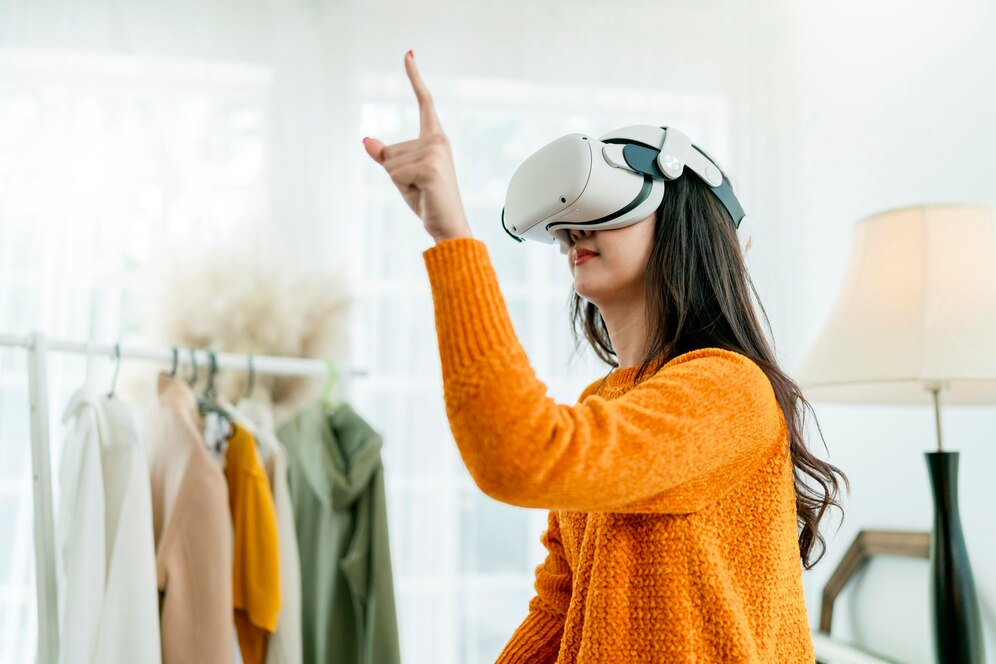The Technology Blog

How AR is Transforming E-Commerce and Online Shopping
Shopping online has come a long way from simple product listings and static images. Thanks to augmented reality (AR), online shopping was upgraded. This technology creates a vibrant bridge between the digital realm and reality. Now, you can envision products in your own space before making a purchase. It’s like a fitting room for your home—transforming how you shop!
From virtual try-ons to visualising furniture in your home, AR is changing the way we shop online. This shift isn’t just a trend—it’s a major step forward for customer experience and business growth.
What Is AR Shopping?

AR shopping refers to using augmented reality technology to enhance online retail experiences. It adds digital elements, such as 3D models or animations, to what the user sees in the real world. This works through their smartphone, tablet, or AR glasses.
Instead of guessing how a product might look or fit, customers can now interact with items virtually. This improves confidence in buying decisions and reduces the need for returns.
Key Ways AR Is Used in Online Retail
1. Virtual Try-Ons
One of the most popular uses of AR in e-commerce is virtual try-ons. Shoppers can see how clothes, shoes, glasses, or even makeup look on them in real-time using their device’s camera.
Brands such as Warby Parker, Sephora, and Nike now offer try-on features. These let users “wear” products before buying them. This makes the shopping process more personal and reduces uncertainty.
2. Previewing Furniture and Home Décor
Buying furniture online often comes with doubts—Will this sofa fit in the room? Does the colour match the walls?
AR solves this by letting customers place 3D versions of furniture in their space using their phones. IKEA’s AR app, for example, lets users visualise full-room setups before making a purchase.
This practical use of AR has boosted buyer confidence and helped reduce return rates in the home décor sector.
3. Interactive Product Visualisation
AR also helps customers understand product features better. For example, tech companies can show users how a laptop opens, how a speaker rotates, or what the inside of a device looks like.
Instead of just reading product specs, customers can see items in action—virtually. This is especially helpful for complex products or gadgets.
Benefits for Consumers
Better Shopping Experience
AR makes online shopping more fun, interactive, and informative. Instead of scrolling through images, users can interact with products hands-on, even from their living room.
Informed Purchase Decisions
Trying products virtually helps shoppers make better decisions. It cuts down on guesswork. This is key for things like fashion, glasses, or furniture.
Reduced Returns
By helping customers choose the right product the first time, AR can reduce the chances of returns due to poor fit, size, or appearance.
Advantages for Retailers
Higher Conversion Rates
Retailers using AR are seeing better engagement and more completed purchases. When customers feel confident, they’re more likely to buy.
Increased Customer Satisfaction
Offering AR features shows that a brand is investing in technology to improve service. This can build trust and improve customer loyalty.
Competitive Edge
AR still feels innovative to many shoppers. Brands that adopt it early can set themselves apart from competitors and attract tech-savvy customers.
Industries Leading the AR Shopping Trend
Fashion and Beauty

Brands in this space were early adopters of AR. Whether it’s testing lipstick shades or trying on jackets, AR lets shoppers explore style from their phones.
Popular AR features in fashion and beauty:
- Real-time makeup try-on
- Virtual fitting rooms
- Size recommendations using AR body scans
Home Furnishings
Furniture and interior brands benefit heavily from AR because visualisation is crucial. Seeing how a rug or table fits in a room is more effective than any product description.
Eyewear
Buying glasses online used to mean guessing how they’d look. Now, brands like Ray-Ban and Zenni Optical use AR to show how frames suit your face instantly.
Automotive
Car brands are using AR to let users explore vehicle interiors, features, and customisation options without going to a showroom.
Challenges to Widespread AR Adoption
While AR offers clear benefits, there are still some barriers:
Technical Limitations
Not all users have access to AR-capable devices, and AR content must be optimised for different phones and operating systems.
Development Costs
Creating high-quality 3D models and building AR tools can be expensive, especially for small businesses. However, tools like WebAR are helping make AR more accessible without the need for apps.
User Education
Some shoppers may not be familiar with AR or how to use it. Retailers need to provide clear instructions and seamless experiences to get customers on board.
The Future of AR in E-Commerce
As AR technology becomes more mainstream, its role in online shopping is set to expand. Here are some key trends to watch:
- AI Integration: AR tools will become smarter. They will suggest options based on users’ likes and past choices.
- Web-Based AR: More retailers are moving away from apps and offering AR features directly in browsers.
- AR Glasses: As wearable AR devices become more popular, they’ll unlock new ways to shop hands-free and on the go.
- Customisation: Shoppers can use AR to personalise products in real time. They can choose colours and add features.
Conclusion: AR Is Reshaping the Way We Shop
Augmented reality and virtual reality are no longer a distant dream but part of our shopping reality. Picture trying on clothes or placing furniture in your living room. AR connects what you want with real experience.
This new idea turns shopping into a fun adventure and reduces the chance of disappointment. It’s a golden ticket for retailers to shine brighter, engage customers, and supercharge sales.
AR shopping will become part of e-commerce as this technology gets easier to use.









